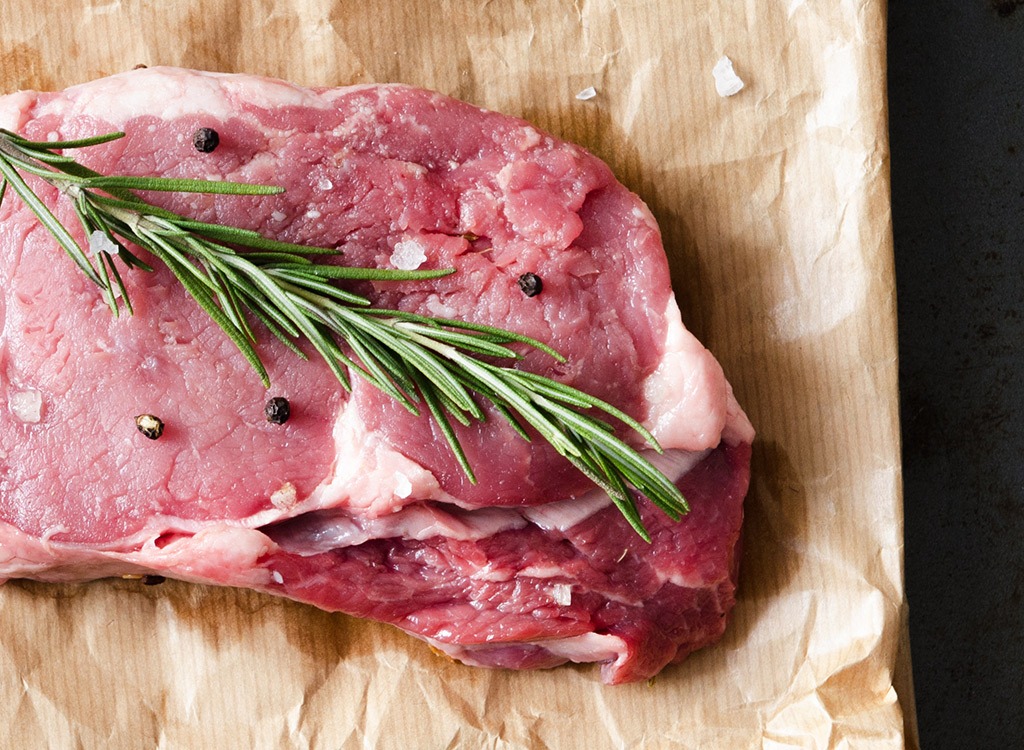Counter Intelligence

Life used to be a lot simpler. And so, too, was eating meat. Back when our grandparents were young—back before “carbon footprints”; before 1,097 channels of basic cable seemed quaint and old-fashioned; before librarians, accountants, and middle-age checkout clerks sported “edgy” tattoos on their backsides—grilling a hamburger was a pretty simple task. You went to the meat counter, bought some ground chuck, brought it home, and threw it on the grill. Just add ketchup.
Nowadays, however, it seems like just making ourselves burgers involves tense negotiation among scientific, ethical, and nutritional philosophies. Do we get the 95 percent lean, or the 85 percent lean? Is the red meat grass fed, free range, and organic, or was this cow raised in the livestock equivalent of Alcatraz? (And exactly how many cows went into making that burger in the first place?) And should we make a turkey burger, or maybe a bison burger, or even a veggie burger instead?
All that confusion is too bad, because meat is perhaps our best source of protein, the nutrient essential for building healthy bones and muscle, providing the body with long-burning energy. Protein is made of amino acids, which can be split into two types: essential and nonessential. A lot of foods, from broccoli and pasta to potatoes, include some of these amino acids. But the best forms of protein include all nine essential amino acids that your body can’t produce naturally, compounds it needs to maintain muscles and battle fat. Beef, pork, and poultry—as well as seafood, dairy, eggs, nuts, quinoa, and oats—are the best sources. (Psst! Bookmark these 26 Best Vegetarian Sources of Protein now!)
But too much of the wrong kinds of meat can wreak havoc on our bellies, our blood pressures, and our poor, hardworking arteries. Processed meats in particular—stuff like ham, sausage, pepperoni, and other things that you might apply to the top of a pizza or the interior of a hero—are usually packed with more lard than an appropriations bill. So knowing what you’re buying—and making sure you get your money’s worth—is important. Here are some of the most important—and commonly abused—terms in the industry. And now that you’ll know what to look for when buying chicken and meat, don’t miss our exclusive and indepth report of the 40+ Popular Types of Fish—Ranked for Nutrition!
Chicken

The Claim: “Air chilled”
The Truth: Standard practice for chicken processing includes dunking the birds in a frigid bath to keep bacteria at a minimum. Air chilling skips the cold-water treatment in favor of placing chickens in cooling chambers. Manufacturers have proclaimed its cleansing superiority, but some studies do not support the theory. Both air chilling and immersion are comparable at reducing bacteria before packaging. Flavor, however, may indeed be superior, as the slow chilling can yield a more tender, less water-saturated chicken.
The Claim: “Raised without antibiotics”
The Truth: Unlike the beef industry, big chicken producers have begun
to curtail the use of antibiotics in recent years, addressing concerns that bacteria dangerous to humans could be developing drug resistance. Still, Tyson, Perdue, and others have been unable to wean their birds entirely off antibiotics, so this claim is worth something. A couple extra bucks a pound? That’s for you to decide. Inspired yet? Try these 35 Best-Ever Chicken Recipes for Weight Loss!
The Claim: “No retained water”
The Truth: When immersed in their cold-water baths after slaughter, poultry can absorb up to 8 percent of their body weight, diluting taste and nutrition. On top of added water, conventional poultry can be “enhanced” with salt. The USDA has ignored petitions to consider salt a food additive; in turn, some manufacturers have jacked up the sodium content of their chickens.
The Claim: “Organic”
The Truth: The organic chicken industry has grown wildly in recent years. Big Agriculture has seen the potential profit boon of charging an average of 100 percent more for organic chickens, and they have secured the coveted (and often pricey) USDA stamp for what some activists argue are less-than-reputable practices. Look for two certification stamps—the Secretary of Agriculture seal and the USDA Organic seal—confirming that the animals were fed organic feed and had access to pasture. Speaking of organic, don’t miss these 17 Cheap Organic Foods You Should Be Buying.
The Claim: “Free range”
The Truth: If the claim conjures images of healthy birds roaming freely about rolling hills, feasting on nature’s delicacies, think again. Technically, free-range chickens must have access to the outdoors for at least 51 percent of their lives, but the USDA, which approves each manufacturer’s “free range” claim on a case-by-case basis, does not strictly define “outdoors.” The term could mean anything from idyllic open acreage to a puny pen. Guess which is true for the majority of free-range chickens available in supermarkets?
Beef

The Claim: “No antibiotics administered”
The Truth: Crowded feedlots are breeding grounds for bacteria, illness, and disease, which is one reason why most beef cattle are pumped full of antibiotics. The other reason: corn. Cows’ stomachs are designed to digest grass, but with cheap, subsidized corn in high supply, most cows in this country live on a diet consisting of 75 percent corn, 10 percent roughage, and 15 percent animal by-products. To fight off the ulcers, heartburn, and potentially fatal liver abscesses caused by this diet, the beef industry turns to antibiotics. It’s bad not only for the cow, but also for you: Corn-fed beef is nearly twice as fatty as grass-fed beef and has lower concentrations of omega-3 fatty acids. This is why beef that’s been raised without antibiotics is preferred. Find out 30 Worst Foods For Your Heart to learn more.
The Claim: “No growth stimulants or added hormones”
The Truth: A good thing, to be sure, and decidedly rare in the world of industrial beef. About two-thirds of cows in the United States are treated with growth hormones to speed growth and ultimately maximize profit. While the USDA has deemed growth hormones safe for cattle and the humans who consume them, the European Union (EU) isn’t quite so sure. Over the years, researchers have raised concern over possible links between growth hormones and issues like early puberty in girls, lower sperm count in men, and breast cancer, but the jury is still out on the final effects. The EU prohibits the use of growth hormones in the raising of cattle and has banned hormone-injected beef since 1988.
The Claim: “All natural, minimally processed. Contains no artificial ingredients”
The Truth: You’ll see the word “natural” all over meat packaging, both beef and poultry. The meat industry became very fond of the term “natural” with the rising popularity of organic foods. Producers of non-organic foods worried that consumers would assume that conventional meat would translate into “chemical ridden,” which spurred almost all meat manufacturers to emblazon their products with the phrase “all natural.” It’s easy enough, since the USDA doesn’t carefully regulate the term—making it all but meaningless to the consumer. Check out these 20 Healthy Foods You Better Eat in Moderation.
The Claim: “USDA choice beef”
The Truth: Not all steaks taste the same. The USDA grades beef based on marbling and the age of the animal, which affect the quality of your sizzling steak. The higher the degree of marbling—which is to say, the fattier—the more tender and flavorful (and caloric) the meat. You’ll probably never see a lower grade than Select at the supermarket, which is leaner than Prime and Choice grades, respectively the highest and second-highest grades. Pricey Prime is a rare supermarket find, too, considering just 2 percent of all beef is graded Prime and most of that goes to restaurants.








